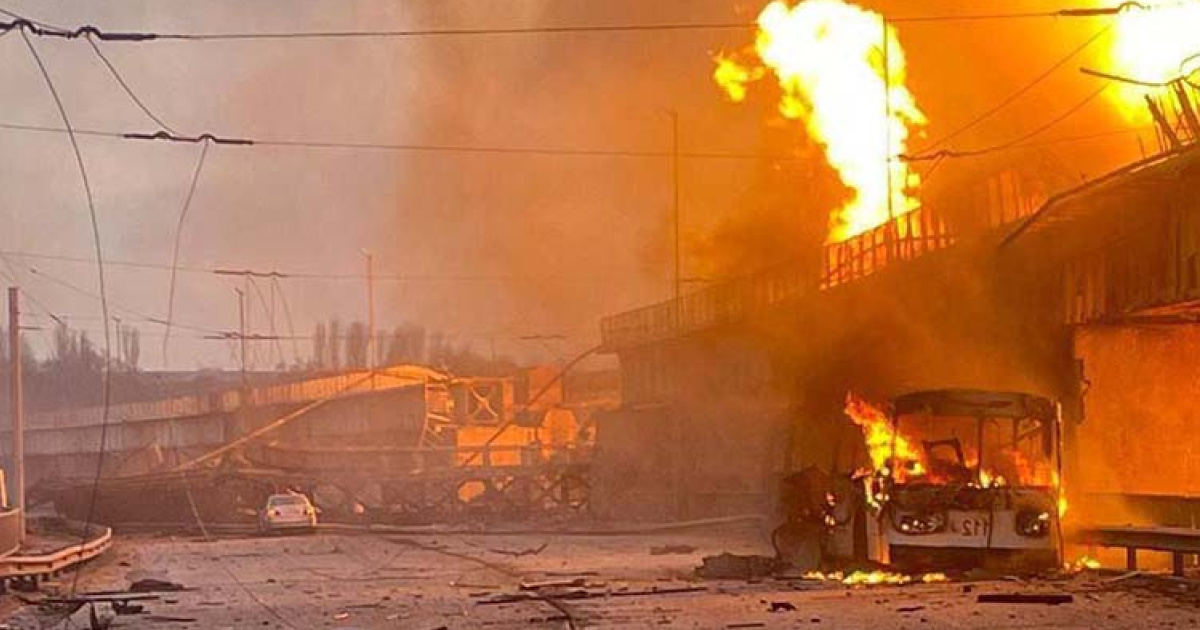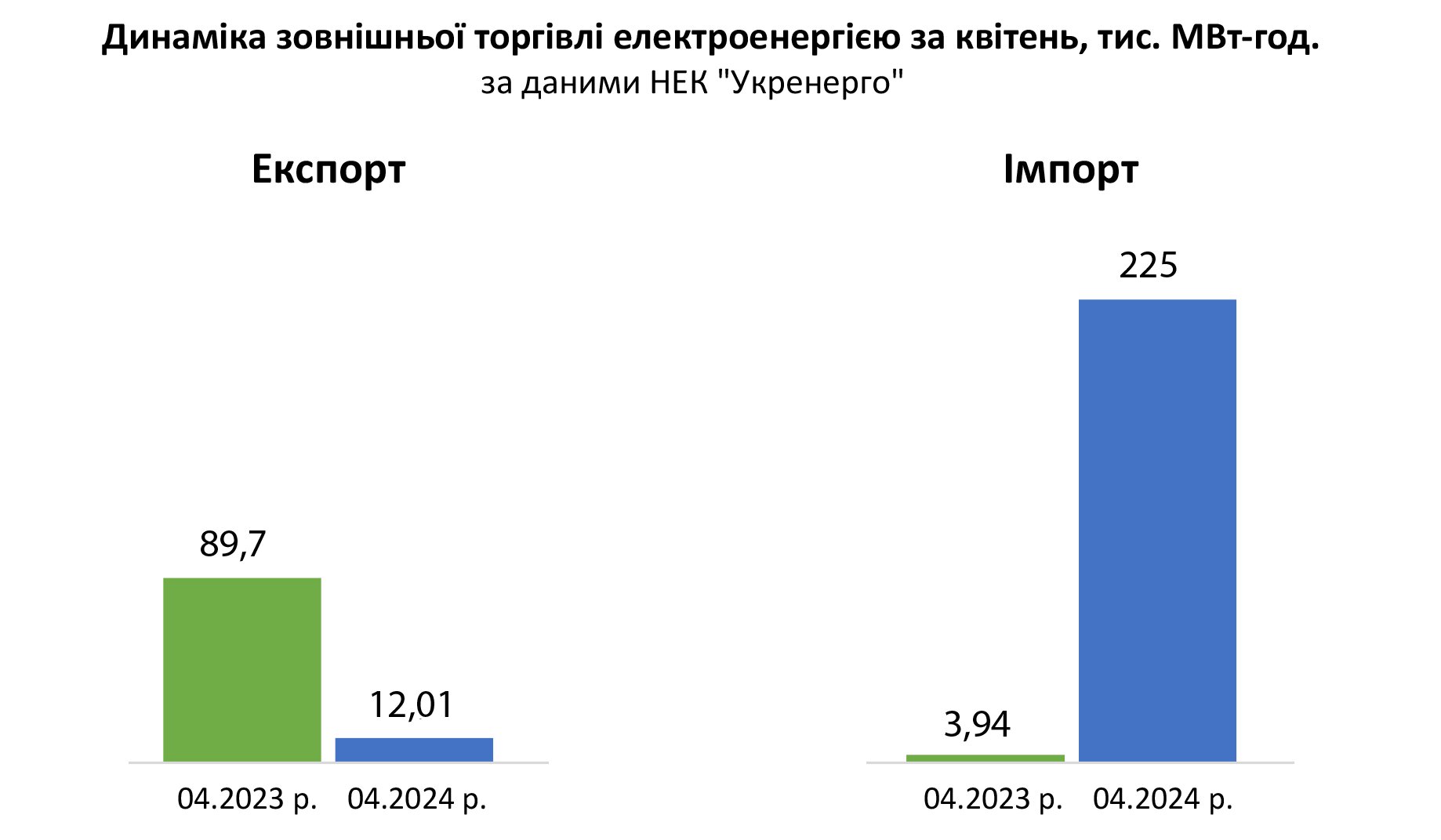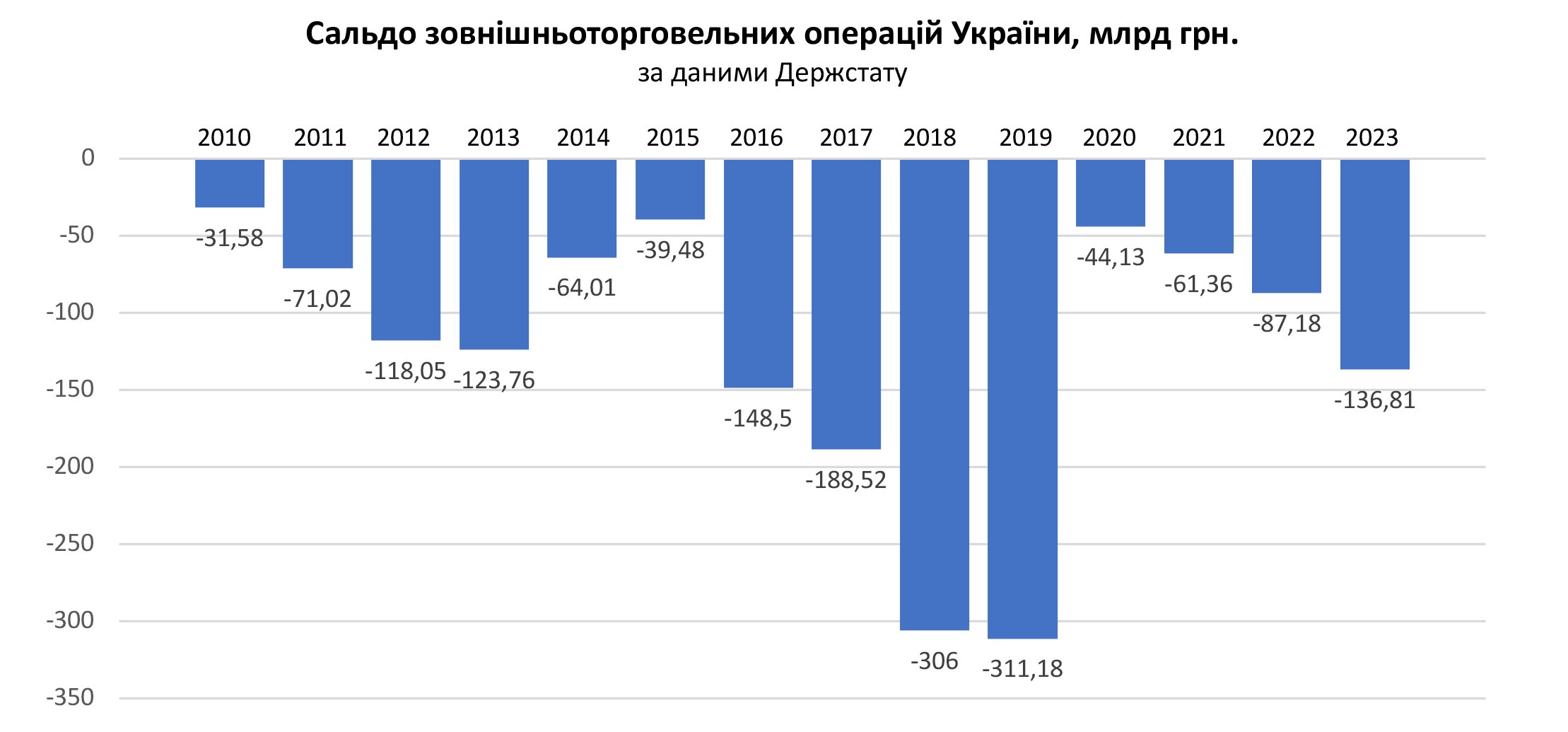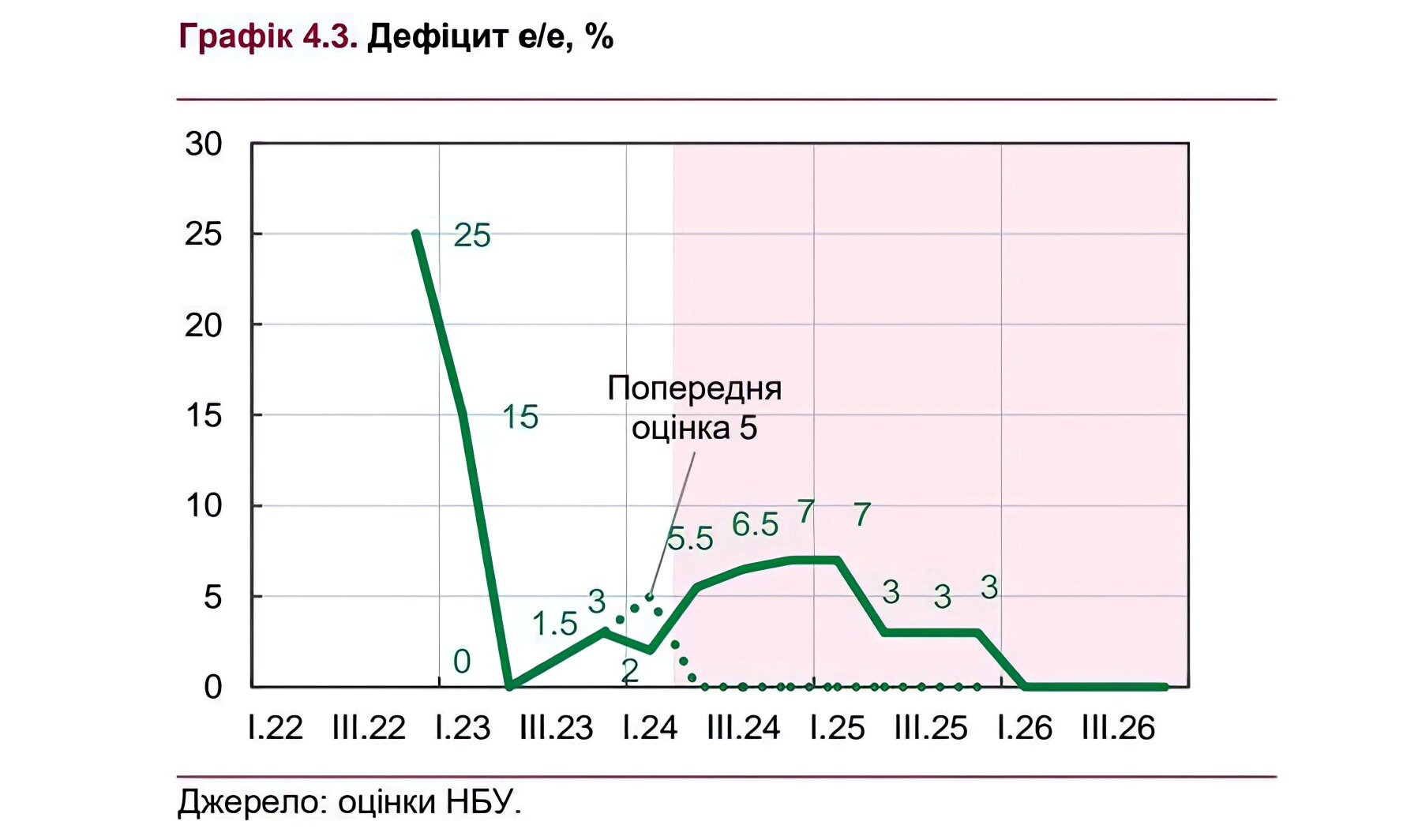Energy sector: the unavoidable burden of tariffs

Spring missile attacks by russian forces on energy facilities will hit Ukrainian consumers hard, especially the population. In April, the National Bank of Ukraine (NBU) noted that to restore the destroyed energy infrastructure, it would be necessary to increase electricity tariffs. Consequently, by decision of the Cabinet of Ministers, from June 1, tariffs nearly doubled from 2.64 to 4.32 UAH/kWh. However, even with this increase, planned power outages are expected to continue for a long time.
"Atom" in the "dry residue"
Massive missile strikes on Ukrainian power plants in April coincided with a pause by U.S. Republican congressmen in new military aid to Kyiv. The kremlin quickly took advantage of the absence of new air defense systems for the Ukrainian Armed Forces.
The most significant events were the complete destruction of the Zmiivska Thermal Power Plant (TPP) in the Kharkiv oblast and the Trypilska TPP near Kyiv on March 22 and April 11, respectively. Earlier, on July 25, 2022, the occupiers captured the Vuhlehirsk TPP in the Donetsk oblast. As a result, the state-owned company PJSC "Centrenergo" lost 100% of its production capacities.

The turbine hall of the Trypilska TPP burns after a hit by a russian missile
The Kharkiv Combined Heat and Power Plant (CHP) -5 and Sumy CHP were also completely destroyed. At the Burshtyn TPP and Ladyzhyn TPP (in Ivano-Frankivsk and Vinnytsia oblasts), all power units were damaged, with damage ranging from 50% to 100%, according to DTEK's Executive Director D. Sakharuk.
On March 22, missile strikes also targeted Hydroelectric Power Plants 1 and 2 in Zaporizhzhia, which form the Dnipro Hydroelectric Power Station. NEC "Ukrenergo" described the damage as "critical".
Finally, on March 29, russian forces targeted the Dniester Hydroelectric Power Station (the Chernivtsi oblast) and the Kaniv Hydroelectric Power Station (the Cherkasy oblast). The extent of the damage was not reported.
Nevertheless, on May 2, Foreign Minister Dmytro Kuleba stated in an interview with Western media: "Half of our energy infrastructure is destroyed". This implies that only the nuclear power plants (NPPs) remain operational. These are the Rivne, Pivdennoukrainsk, and Khmelnytskyi NPPs.
However, the nuclear plants cannot save the situation. Their reactors cannot adjust their output to respond to peak electricity demand. The task of balancing the energy system was performed by thermal power plants (TPPs) and combined heat and power plants (CHPs). Therefore, planned power outages for the population and enterprises are inevitable.
"We need to prepare for the fact that we will live under conditions similar to those we experienced over the past day", - said Yurii Boiko, a member of the supervisory board of "Ukrenergo", on May 15, commenting on the power outages in several regions.
Consequences
The return of regular rolling blackouts is not the only outcome of russian missile strikes.
The future existence of state coal mines (i.e., primarily their workers and their families) is now in question, as "Centrenergo" was their only buyer.
Theoretically, this coal could be exported, especially since the Black Sea shipping corridor from Ukrainian ports has been operating around the clock since April. However, the coal's quality (non-compliance with European eco-standards) makes this option problematic and unlikely.
The shortfall in electricity is partially compensated by imports from neighboring Poland, Slovakia, Romania, and Hungary. But this leads to a second problem: additional electricity imports worsen the country's trade balance.
In April alone, electricity imports increased by 57 times compared to the same month in 2023, while exports decreased by 7.5 times.

Dynamics of foreign trade in electricity for April, thousand MWh. according to NEC "Ukrenergo" (export and import)
This means an additional outflow of foreign currency from our economy in foreign trade operations. This is significant given that the overall balance has been negative for many years.

Balance of foreign trade operations of Ukraine, billion UAH (according to the State Statistics Service)
In other words, when we sell our goods in foreign markets, we receive fewer dollars and euros than we spend on buying foreign goods. And electricity is just another commodity.
It's clear that industrial enterprises' capabilities to restore production have now been sharply limited. This primarily affects large energy consumers such as the metallurgical plants "ArcelorMittal Kryvyi Rih", "Zaporizhstal", "Kametstal" and "Interpipe Stal".
It is also evident that quickly overcoming the energy crisis won't be possible. "It will take years to restore a station", - stated I. Syrota, CEO of "Ukrhydroenergo", commenting on the damages to the Dnipro Hydroelectric Power Station.
The National Bank of Ukraine (NBU) forecasts that the electricity deficit in the Ukrainian system will average 5-7% and will persist throughout this year and next year. During peak hours, the deficit will reach 30% of the demand. The energy system is expected to return to normal only by 2026, according to the NBU.

Deficit of electricity, % (source: NBU estimates)
"However, the risks of new destructions and, consequently, higher deficits remain", - states the NBU's April macroeconomic review.
What to do?
A year ago, after the autumn-winter strikes, we managed to receive significant support from our allies. In June 2023, US Secretary of State Antony Blinken announced the White House's decision to allocate over $520 million for the restoration of Ukraine's energy infrastructure.
There was also aid from the European Union and individual EU countries, from Japan, and so on. This aid was not only financial but also included free supplies of energy equipment. This time, official Kyiv has also reached out to foreign partners.
On April 4, Energy Minister Herman Halushchenko met with US Ambassador to Ukraine Bridget Brink. He requested assistance with equipment for repairing thermal power plants (TPPs), high-voltage transformers and relays, as well as autotransformers.

Halushchenko informed the US Ambassador about the consequences of russia's spring missile attacks on Ukraine's energy infrastructure
According to the Ministry of Energy of Ukraine, Brink, on behalf of the US administration, "expressed readiness to assist in restoring the energy sector and preparing for the next heating season". However, no specific details have been provided so far.
For comparison, a year ago, on March 29, the EU Energy Ministers' Committee decided to provide Ukraine with energy equipment to replace what had been damaged or destroyed. According to Sweden's Energy Minister Ebba Busch, the supplies included 5 million items. This time, there has been no news from official Brussels on this matter.
Germany, one of the EU leaders, announced on May 9 the allocation of a €45 million grant for the restoration of Ukraine's energy sector. Again, for comparison, on October 25, 2023, after the first wave of missile strikes, the German Ministry of Economy provided €195 million for these purposes.
Currently, the damage from russia's energy attacks is incomparably greater. Yet, the German aid is almost four times less. Clearly, this reflects the "fatigue effect" among partners: they are willing to help, but not indefinitely.
Plus, there’s an understanding that attacks on Ukraine’s energy infrastructure will continue. From the perspective of foreign politicians, it's not entirely sensible to focus on restoring these facilities now. It seems more prudent to wait until the war is over.
However, Ukrainians need to survive until the end of the war. Therefore, the main solution, as usual, has been the simplest: "help yourself".
Let's remember that from June 1 last year, the electricity price for the population had already increased from 1.44-1.68 UAH/kWh to 2.64 UAH/kWh. It was assumed that these additional revenues would allow energy companies to fund repairs and purchase new equipment.
The National Bank refers to these rates as "subsidized". However, according to its analysts, new, even larger subsidies are now required. Clearly, this is indeed the case.
According to Halushchenko, the energy sector’s losses from the spring attacks exceeded $1 billion. It would be fortunate if foreign aid could cover even half of that amount.
It's worth noting that this time, the burden of solving the problem wasn't entirely placed on the population. The oligarchs will also have to pay. From June 1, the cost of electricity for industrial enterprises increased from 3000 to 5600 UAH/MWh from 11:00 to 17:00 (peak prices) and from 7500 to 9000 UAH/MWh from 17:00 to 23:00.
It should be added that these "subsidized" rates will be in effect until May 1, 2025. After that, as they say, time will tell.
By Vitaliy Krymov, OstroV
